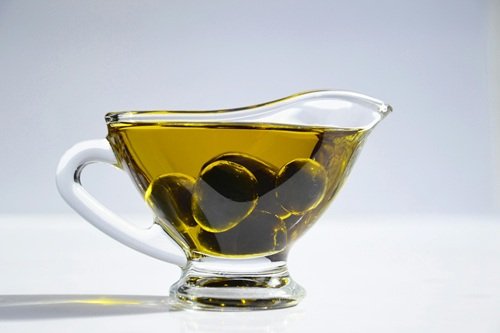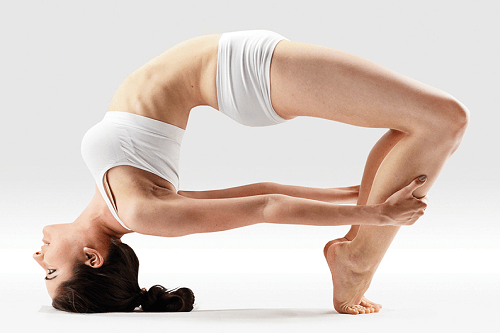In recent years, diet trends have shifted toward more natural, plant-based, and whole food approaches. Among these is the no-oil diet, which has gained traction for its potential health and beauty benefits. While oils—even the so-called “healthy” ones—have long been considered staples in cooking, more people are choosing to eliminate them altogether. The result? Improved health, better digestion, and glowing skin.
In this article, we’ll explore what the no-oil diet is, how it works, and the six surprising benefits it can offer your body and skin. Whether you’re curious about going oil-free or looking for ways to improve your diet, this guide will help you make an informed decision.
What Is a No-Oil Diet?
A no-oil diet excludes all forms of added oil and fats. This includes vegetable oils (like canola, sunflower, and soybean), nut oils (like almond and walnut), and even “healthier” oils like olive and coconut oil. Instead, people on a no-oil diet obtain their fats naturally from whole foods such as avocados, nuts, seeds, and olives—without extracting or processing the oils.
The idea is to eat food in its most whole and unrefined form. Proponents of the no-oil lifestyle argue that oils are highly processed, calorie-dense, and nutritionally lacking compared to the foods they come from.


1. Improved Heart Health
Perhaps the most compelling reason to go oil-free is its positive impact on heart health. Many oils, even the ones promoted as “heart-healthy,” are still high in saturated fats or refined polyunsaturated fats that can contribute to arterial plaque buildup.
Key Points:
- The no-oil diet emphasizes whole plant foods, which are rich in fiber, antioxidants, and phytonutrients—key factors in preventing heart disease.
- Studies, including research by Dr. Caldwell Esselstyn, have shown that eliminating oil can reverse the progression of coronary artery disease.
- Blood pressure and cholesterol levels often drop naturally when oil is removed from the diet.
By focusing on fiber-rich vegetables, legumes, whole grains, and healthy fats from seeds and avocados, you’re supporting better circulation and reducing cardiovascular risk.
2. Clearer and Healthier Skin
Your skin is a direct reflection of what you eat. For many people, cutting out oil leads to less acne, reduced inflammation, and a more youthful glow.
Why it works:
- Oils can clog pores internally by increasing sebum production, especially in those with oily or combination skin.
- The no-oil diet eliminates trans fats and inflammatory Omega-6 fatty acids, which are often linked to skin conditions like eczema, psoriasis, and acne.
- Whole plant foods contain antioxidants and vitamins (like A, C, and E) that support skin repair and collagen production.
People who adopt a no-oil diet often report that their skin becomes more balanced—neither too oily nor too dry—and that it heals faster from breakouts and irritation.
3. Weight Loss Without Calorie Counting
One tablespoon of oil contains around 120 calories, and those calories offer little nutritional value. Eliminating oil can make a significant difference for those looking to lose weight naturally.
Benefits:
- You’ll consume fewer empty calories, allowing more room in your diet for nutrient-dense foods.
- Meals are more satisfying and voluminous because they’re higher in fiber and water content, which promotes satiety.
- No need to track every bite—just stick to whole, oil-free foods, and weight loss often follows organically.
By removing calorie-dense oils, many people find it easier to create a calorie deficit without feeling deprived or hungry.


4. Better Digestion and Gut Health
Oil slows down digestion. It coats food in a layer of fat that makes it harder for your stomach to break it down efficiently. By cutting oil, many people experience less bloating, gas, and constipation.
Gut-friendly advantages:
- Fiber intake goes up, since oil-free diets naturally focus on beans, fruits, veggies, and grains.
- You’ll support a healthier microbiome, which thrives on fiber—not fat.
- Symptoms of IBS, acid reflux, and sluggish digestion often improve when oil is removed from the equation.
A no-oil diet helps reset the gut, allowing it to function optimally and efficiently process the food you eat.
Also Read: The Primal Fitness Comeback: Why Natural Movement is Booming in 2025 | 7 Powerful Reasons Why Pickleball Is the Fastest-Growing Outdoor Fitness Trend | Labubu Blind Boxes Unboxed: The Viral Toy Craze Redefining Fashion and Fandom in 2025 | Digital detox 2025 | Sustainable Lifestyle 2025
5. Balanced Hormones and Reduced Inflammation
Refined oils—especially those high in Omega-6 fatty acids—can throw off the body’s hormonal balance and fuel chronic inflammation.
How no-oil helps:
- Eliminating oil reduces your intake of pro-inflammatory substances, helping your body find equilibrium.
- Whole food fats, like flaxseeds and chia seeds, are rich in Omega-3s, which help reduce inflammation and promote hormonal health.
- Many people report better menstrual cycles, fewer PMS symptoms, and improved energy levels.
Inflammation is linked to a variety of conditions including arthritis, autoimmune diseases, and even mental health struggles. Reducing it can lead to a better quality of life overall.
6. Sustainable Energy and Mental Clarity
While fats are a source of energy, the body works more efficiently when it gets its fuel from complex carbohydrates and whole foods. People on a no-oil diet often describe feeling lighter, more energetic, and mentally clear.
Benefits:
- Meals digest more cleanly, avoiding the post-meal sluggishness that often comes with high-fat dishes.
- The brain thrives on glucose from whole grains and fruits, helping you stay focused and alert.
- Stable blood sugar levels reduce mood swings, fatigue, and brain fog.
When your body isn’t burdened by heavy, greasy meals, it can function at a higher level—both physically and mentally.
Tips for Adopting a No-Oil Diet
Switching to a no-oil diet might feel overwhelming at first, but it’s entirely doable with some simple changes:
- Use water or vegetable broth to sauté vegetables instead of oil.
- Roast or bake with parchment paper or silicone baking mats to prevent sticking.
- Embrace oil-free dressings made with tahini, avocado, or blended beans.
- Cook meals in a non-stick pan or air fryer for convenience.
- Choose whole foods that naturally contain fat—like nuts, seeds, and avocados.
Common Myths About the No-Oil Diet
❌ Myth: “You need oil for healthy skin and hair.”
✔️ Truth: Healthy fats are essential, but they’re better obtained from whole food sources like nuts and seeds, which contain fiber, vitamins, and minerals.
❌ Myth: “Olive oil is heart-healthy.”
✔️ Truth: While better than some alternatives, olive oil is still a processed fat. Whole olives are a more nutrient-dense choice.
❌ Myth: “Food won’t taste good without oil.”
✔️ Truth: Many herbs, spices, and cooking methods (like roasting, steaming, or grilling) bring out rich, natural flavors—no oil required.
Conclusion
The no-oil diet isn’t just a fad—it’s a science-backed lifestyle change that can lead to better health, clearer skin, and more energy. By focusing on whole, plant-based foods and avoiding processed oils, you’re giving your body and skin the nourishment they truly need.
Whether you’re battling heart issues, trying to lose weight, or just want to feel more vibrant, adopting a no-oil diet can be a transformational step toward a healthier you.


Final Thoughts
If you’re considering making the switch, start gradually. Try one oil-free day per week, then build from there. Your body and skin will thank you for it.
Read More: Silent Walks: Why Gen Z Is Ditching Headphones for Mindful Mornings in 2025 | What is 75 hard challenge? | HOW YOGA BENEFITS YOU IN EVERYDAY LIFE | WHAT IS CARB CYCLE – FAST FAT BURNING PROCESS! | Fittheories | 10 Powerful Reasons Why Outdoor Sports Are Essential for Family Bonding